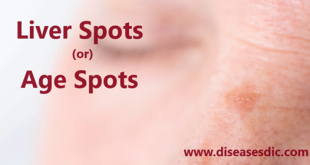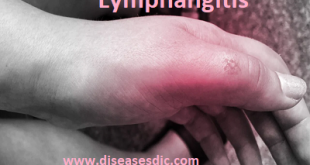Definition
Leukemia is a malignancy (cancer) of blood cells. In leukemia, abnormal blood cells are produced in the bone marrow. Usually, it involves the production of abnormal white blood cells the cells responsible for fighting infection. However, the abnormal cells in leukemia do not function in the same way as normal white blood cells.
The leukemia cells continue to grow and divide, eventually crowding out the normal blood cells. The end result is that it becomes difficult for the body to fight infections, control bleeding, and transport oxygen.
History
Leukemia was first described by anatomist and surgeon Alfred-Armand-Louis-Marie Velpeau in 1827. A more complete description was given by pathologist Rudolf Virchow in 1845. Observing an abnormally large number of white blood cells in a blood sample from a patient, Virchow called the condition Leukämie in German, which he formed from the two Greek words leukos (λευκός), meaning “white”, and haima (αἷμα), meaning “blood”. Around ten years after Virchow’s findings, pathologist Franz Ernst Christian Neumann found that one deceased leukemia patient’s bone marrow was colored “dirty green-yellow” as opposed to the normal red. This finding allowed Neumann to conclude that a bone marrow problem was responsible for the abnormal blood of leukemia patients.
By 1900 it was viewed as a family of diseases as opposed to a single disease. By 1947 Boston pathologist Sidney Farber believed from past experiments that aminopterin, a folic acid mimic, could potentially cure leukemia in children. The majority of the children with ALL who were tested showed signs of improvement in, their bone marrow, but none of them were actually cured. This, however, led to further experiments.
In 1962, researchers Emil J. Freireich, Jr. and Emil Frei III used combination chemotherapy to attempt to cure it. The tests were successful with some patients surviving long after the tests.
Epidemiology
In 2010, globally, approximately 281,500 people died of leukemia. In 2000, approximately 256,000 children and adults around the world developed a form of leukemia, and 209,000 died from it. This represents about 3% of the almost seven million deaths due to cancer that year, and about 0.35% of all deaths from any cause. Of the sixteen separate sites the body compared, it was the 12th most common class of neoplastic disease, and the 11th most common cause of cancer-related death. Leukemia occurs more commonly in the developed world.
Types
Experts divide into four large groups. These groups are classified as acute vs. chronic and lymphocytic vs. myelogenous
Chronic and acute leukemia
There are several stages of maturation in a white blood cell’s lifespan. Acute leukemia is a rapidly progressing disease that results in the accumulation of immature, useless cells in the marrow and blood. They are squeezed out of the bone marrow too early and are not functional. Chronic progresses more slowly and allows more mature, useful cells to be made. In other words, acute leukemia crowds out the good cells more quickly than chronic leukemia.
Lymphocytic and myelogenous leukemia
Leukemias are also subdivided into the type of affected blood cell. If the cancerous transformation occurs in the type of marrow that makes lymphocytes, the disease is called lymphocytic leukemia. A lymphocyte is a kind of white blood cell inside the vertebrae immune system. If the cancerous change occurs in the type of marrow cells that go on to produce red blood cells, other types of white cells, and platelets, the disease is called myelogenous leukemia.
Acute lymphocytic leukemia (ALL)
Also known as acute lymphoblastic leukemia – this is the most common type of leukemia among young children, although adults can get it as well, especially those over the age of 65. The 5-year survival rate is greater than 85 percent among children.
The following are subtypes of ALL: precursor B acute lymphoblastic leukemia, precursor T acute lymphoblastic leukemia, Burkitt’s leukemia, and acute biphenotypic leukemia.
Chronic lymphocytic leukemia (CLL)
This is most common among adults over 55, although younger adults can get it as well. It is the most common type of leukemia in adulthood. CLL hardly ever affects children. The majority of patients with CLL are men, over 60 percent. The 5 year survival rate of treated CLL patients is 82 percent. Experts say CLL is incurable. A more aggressive form of CLL is B-cell prolymphocytic leukemia.
Acute myelogenous leukemia (AML)
AML is more common among adults than children, and affects males significantly more often than females. Patients are treated with chemotherapy. In children diagnosed with AML, the 5-year survival rate is 60-70 percent, though the overall survival rate is 26.6 percent.
Under the WHO classification system, there are six main groups of AML: AML with recurrent genetic abnormalities, AML with myelodysplasia-related features, therapy-related AML and MDS, AML not otherwise specified, myeloid sarcoma, and myeloid proliferations related to Down Sydrome.
Chronic Myelogenous Leukemia (CML)
The vast majority of patients are adults. According to the National Cancer Institute, the 5-year survival rate is 65.1 percent. However, many people with CML have a gene mutation that responds to targeted cancer therapy, called Gleevec. Gleevec (imatinib) is commonly used to treat CML, as well as some other drugs. For those people whose cancer is susceptible to Gleevec, their survival rate can be as high as 90 percent. Chronic monocytic leukemia is a subtype of CML.
Risk factors
Some factors put certain people at higher risk of developing leukemia. The following are either known or suspected factors:
- Artificial ionizing radiation
- Viruses – HTLV-1 (human T-lymphotropic virus) and HIV (human immunodeficiency virus)
- Benzene and some petrochemicals
- Alkylating chemotherapy agents used in previous cancers
- Maternal fetal transmission (rare)
- Hair dyes
- Smoking
Genetic predisposition – some studies researching family history and looking at twins have indicated that some people have a higher risk of developing leukemia because of a single gene or multiple genes.
Down syndrome – people with Down syndrome have a significantly higher risk of developing leukemia, compared with people who do not have Down syndrome. Experts say that because of this, people with certain chromosomal abnormalities may have a higher risk.
Electromagnetic energy – studies indicate there is not enough evidence to show that ELF magnetic (not electric) fields that exist currently might cause leukemia. The IARC (International Agency for Research on Cancer) says that studies which indicate there is a risk tend to be biased and unreliable.
Causes of Leukemia
For most people, there’s no way to identify what causes it. In some cases, though, specific risk factors can be identified:
- Previous chemotherapy or radiation therapy
- Exposure to high doses of radiation or to benzene (found in unleaded gasoline, tobacco smoke, chemical production facilities)
- Family history
- Genetic abnormality, such as an abnormality on chromosome 22 (also known as the Philadelphia chromosome)
- Genetic disorders, such as Down syndrome and Fanconi anemia
All forms of cancer that can spread within the body (malignant), including leukemia, are thought to be due to genetic abnormalities (mutations). In leukemia, the damage occurs in the bone marrow stem cells. These special cells help to manufacture all the other cells in the blood. With this condition the production of these cells is out of control.
Symptoms of Leukemia
Some signs or symptoms are similar to other more common and less severe illnesses. Specific blood tests and bone marrow tests are needed to make a diagnosis. Signs and symptoms vary based on its type.
For acute leukemia, they include:
- Tiredness or no energy
- Shortness of breath during physical activity
- Pale skin
- Mild fever or night sweats
- Slow healing of cuts and excess bleeding
- Black-and-blue marks (bruises) for no clear reason
- Pinhead-size red spots under the skin
- Aches in bones or joints (for example, knees, hips or shoulders)
- Low white cell counts, especially monocytes or neutrophils.
People with CLL or CML may not have any symptoms. Some patients learn they have CLL or CML after a blood test as part of a regular checkup.
Sometimes, a person with CLL may notice enlarged lymph nodes in the neck, armpit or groin. The person may feel tired or short of breath (from anemia) or have frequent infections if the CLL is more severe. In these cases, a blood test may show an increase in the lymphocyte count.
CML signs and symptoms tend to develop slowly. People with CML may feel tired and short of breath while doing everyday activities. They may also have an enlarged spleen (leading to a “dragging” feeling on the upper left side of the belly), night sweats and weight loss.
Diagnosis and test
Doctors may find chronic leukemia in a routine blood test, before symptoms begin. If this happens, or if you have signs or symptoms that suggest leukemia, you may undergo the following diagnostic exams:
Physical exam: Your doctor will look for physical signs, such as pale skin from anemia, swelling of your lymph nodes, and enlargement of your liver and spleen.
Blood tests: By looking at a sample of your blood, your doctor can determine if you have abnormal levels of white blood cells or platelets which may suggest leukemia.
Bone marrow test: Your doctor may recommend a procedure to remove a sample of bone marrow from your hipbone. The bone marrow is removed using a long, thin needle. The sample is sent to a laboratory to look for leukemia cells. Specialized tests of your leukemia cells may reveal certain characteristics that are used to determine your treatment options.
You may undergo additional tests to confirm the diagnosis and to determine the type of leukemia and its extent in your body. Certain types are classified into stages, indicating the severity of the disease. Your stage helps your doctor determine a treatment plan.
Treatment and medications
Leukemia is usually treated by a hematologist-oncologist. These are doctors who specialize in blood disorders and cancer. The treatment depends on the type and stage of the cancer. Some forms of leukemia grow slowly and don’t need immediate treatment. However, treatment usually involves one or more of the following:
- Chemotherapy uses drugs to kill leukemia cells. Depending on the type of leukemia, you may take either a single drug or a combination of different drugs.
- Radiation therapy uses high-energy radiation to damage leukemia cells and inhibit their growth. Radiation can be applied to a specific area or to your entire body.
- Stem cell transplantation replaces diseased bone marrow with healthy bone marrow, either your own (autologous transplantation) or from a donor (allologous transplantation). This procedure is also called a bone marrow transplant.
- Biological or immune therapy uses treatments that help your immune system recognize and attack cancer cells.
- Targeted therapy uses medications that take advantage of vulnerabilities in cancer cells. For example, imatinib (Gleevec) is a targeted drug that is commonly used against CML.
Prevention of Leukemia
There is no known way to prevent most types of this disease. Some types may be prevented by avoiding high doses of radiation, exposure to the chemical benzene, smoking and other tobacco use, or certain types of chemotherapy used to treat other types of cancer.
 Diseases Treatments Dictionary This is complete solution to read all diseases treatments Which covers Prevention, Causes, Symptoms, Medical Terms, Drugs, Prescription, Natural Remedies with cures and Treatments. Most of the common diseases were listed in names, split with categories.
Diseases Treatments Dictionary This is complete solution to read all diseases treatments Which covers Prevention, Causes, Symptoms, Medical Terms, Drugs, Prescription, Natural Remedies with cures and Treatments. Most of the common diseases were listed in names, split with categories.








Your note on leukemia was nice. Could you discuss about shock
Thank you for your feedback. Sure in next few days we will discuss about shock.
your notes about leukaemia is good…as I study I get lots off knowledge….thank you…
how do you relate cancer with a patient who has got prostrate glands ?
Does this form of cancer responds well to treatment?
the treatment responds depend on the phase of their disease (chronic, accelerated, or blast phase), their age, other prognostic factors, and the availability of a stem cell donor with matching tissue type.
what is the tritment of mds patients
we will upload about the treatment of MDS very soon. keep reading our app. thank you.
Thank you very much for all of this information, it is all very interesting but very helpful!
I would like to know what a normal life expectancy of a 67 year old male patient is that has chronic lymphocytic leukemia?
thank you very much!
CLL has a higher survival rate than many other cancers. The five-year survival rate is around 83 percent. This means that 83 percent of people with the condition are alive five years after diagnosis. However, in those over age 75, the five-year survival rate drops to less than 70 percent.
I have my daughter,she is 10yrs old now,she has been on treatment for leukemia for two yrs now and the doctors say that she is okey now and they stopped the treatment,un fortunately after a week she developed some weakness in joints and she can’t even work now,what should we do?
Please consult a doctor as soon as possible.
my daughter is 11years now,she has been on chemo treatment for two years now,at first the doctor said that she is now fine and stopped the treatment, but after one months when she is not on treatment,she got some signs for the disease and at the end they tested her and found the disease again,but now the doctors in Uganda say they have no any other alternative she has to wait for her death,what can I do.I need your help.
Please consult an expert in oncology.
my daughter is sick but I need your help
Please consult a doctor.
my girlfriend has the same disease she told me that she has be shocked by electricity so how is this done
Please consult a doctor for better prescription.
zero leukocytes would mean chronic leukemia is this correct
No, the correct term is Leukopenia which means less number of WBC.
In present will we have some prevention for these disease ?
There is no known way to prevent most types of leukemia.
Some types of leukemia may be prevented by avoiding high doses of radiation, exposure to the chemical benzene, smoking and other tobacco use, or certain types of chemotherapy used to treat other types of cancer.
pls sir can I get the reference to this write up
Pls I need the reference,I mean the author of this write up